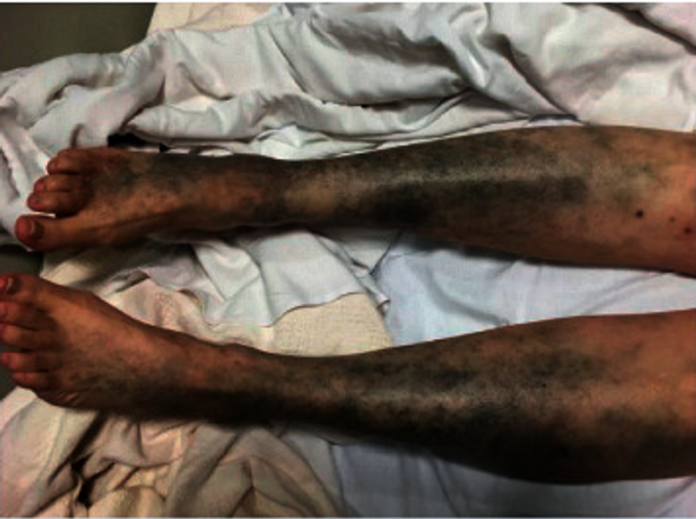Case of levofloxacin-induced acute hyperpigmentation in 58-year-old chronic kidney disease patient.
A 58-year-old white, female patient presented with complaint of a 2-day history of hyperpigmented bluish-grey rash over her bilateral lower extremities. This article describes the case of levofloxacin-induced acute hyperpigmentation in a chronic kidney patients.
The patient’s medical history revealed autosomal dominant polycystic kidney disease and hypertension with stage 5 chronic kidney disease. She currently wasn’t taking any anticoagulants. However, a few days before she presented to the clinic, doctors had diagnosed her with a urinary tract infection. And was prescribed oral levofloxacin 750 mg/day for 5 days. Her history was not significant for any recent sick contacts or fever.
On questioning her further, she revealed that the rash had appeared on the third day of treatment. She denied any sun exposure to her lower extremities. Physical examination was remarkable of a non-blanching bluish grey rash on the bilateral lower extremities. Including the anterolateral aspect involving bilateral feet.
The patient’s distal pulses were regular and there no other significant clinical findings. All laboratory results were within normal range. Therefore, she was referred to the dermatology clinic and the skin lesion on her lower extremities was biopsied. Skin biopsy was remarkable of scattered deposits of brown-black pigment in dermal spindle cells. In addition, the analysis showed minimal inflammation, which indicated a pigmentary rash. High-power magnification showed coarse brown cytoplasmic granules.
Furthermore, she was not on any new medications other than levofloxacin. She had completed the antibiotic treatment when she presented to the clinic. The rash resolved entirely, without any residual changes when she visited the clinic for follow-up after 3 weeks.
References
Levofloxacin-Induced Acute Hyperpigmentation Changes in a Chronic Kidney Disease Patient https://www.ncbi.nlm.nih.gov/pmc/articles/PMC7669357/




